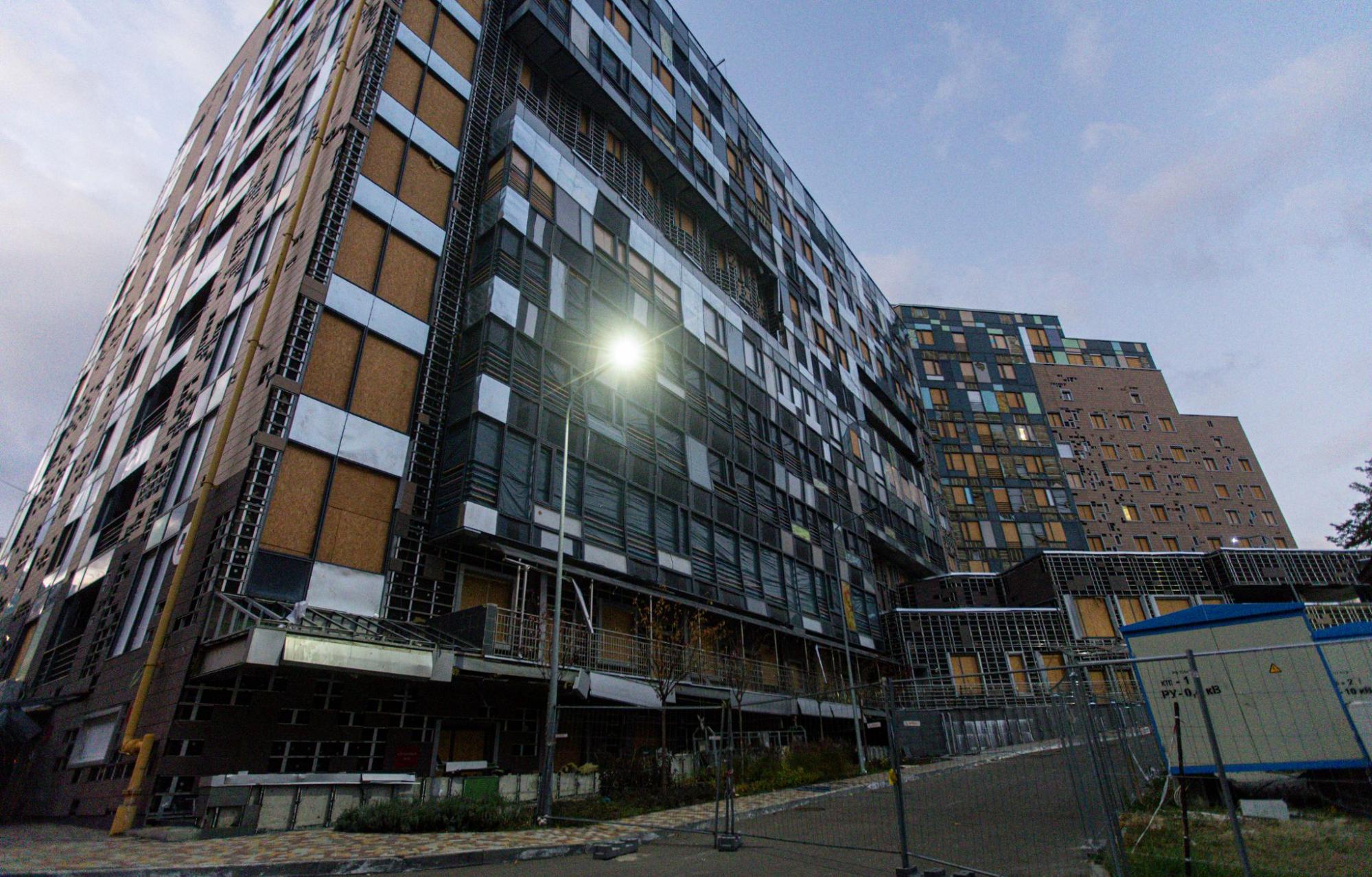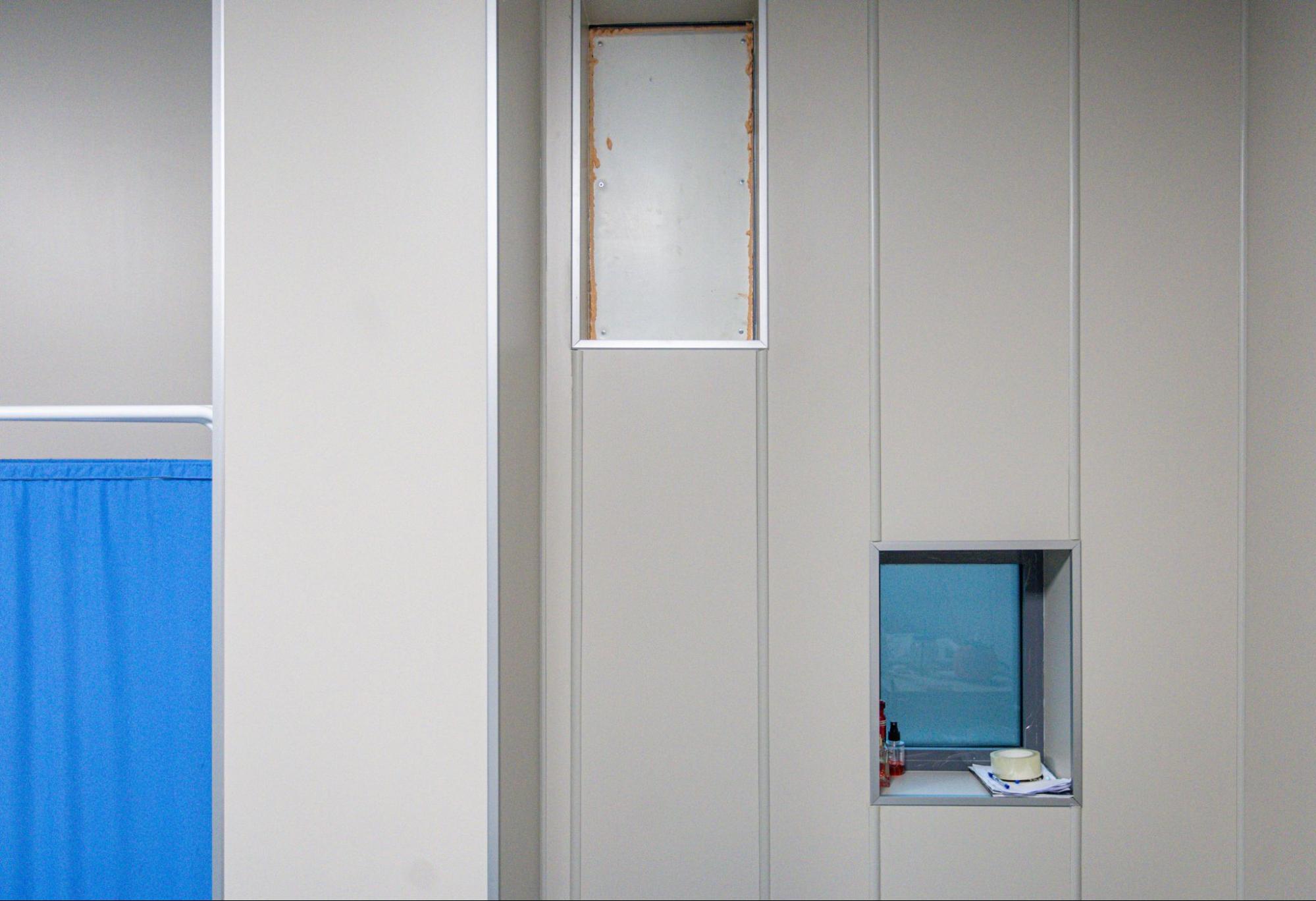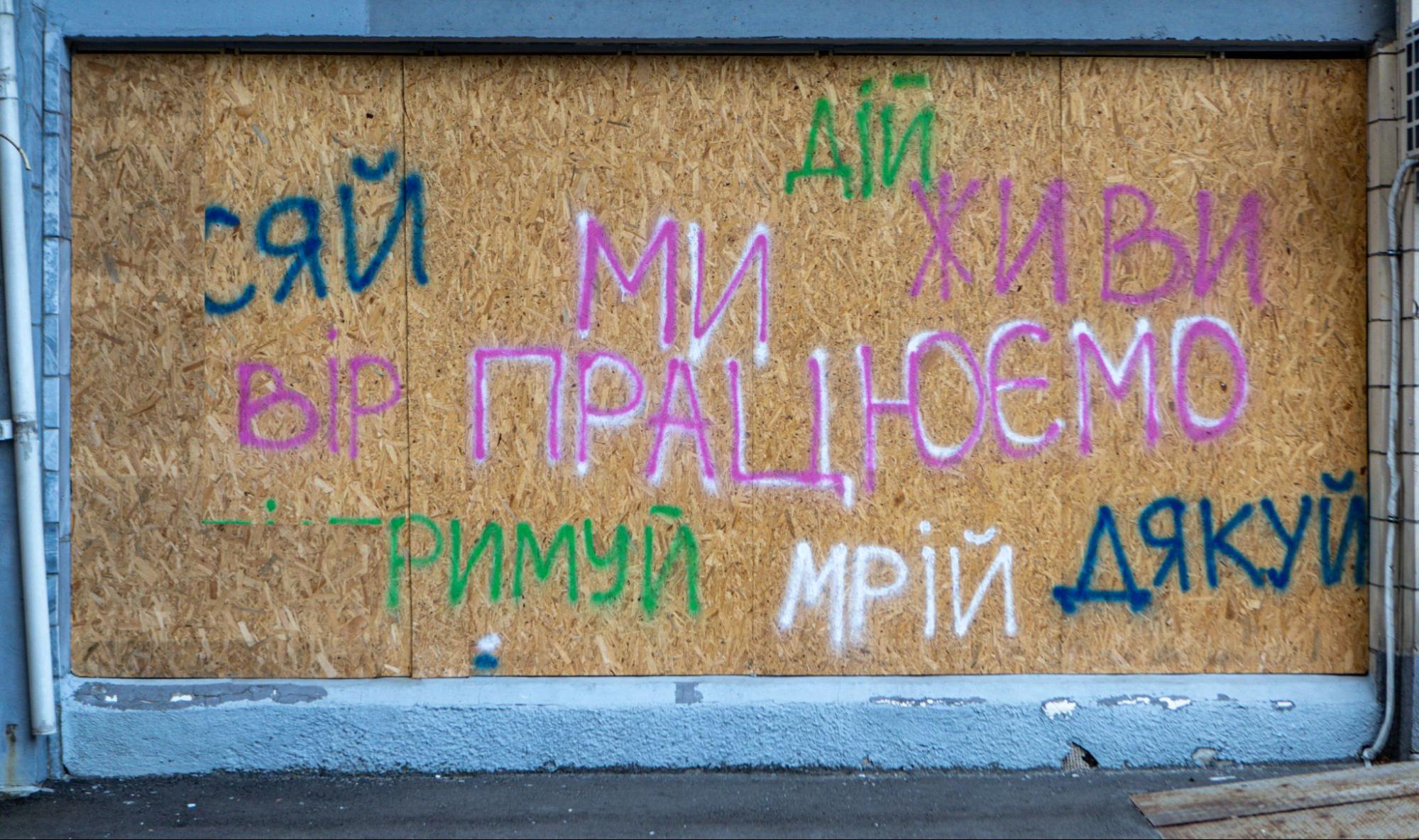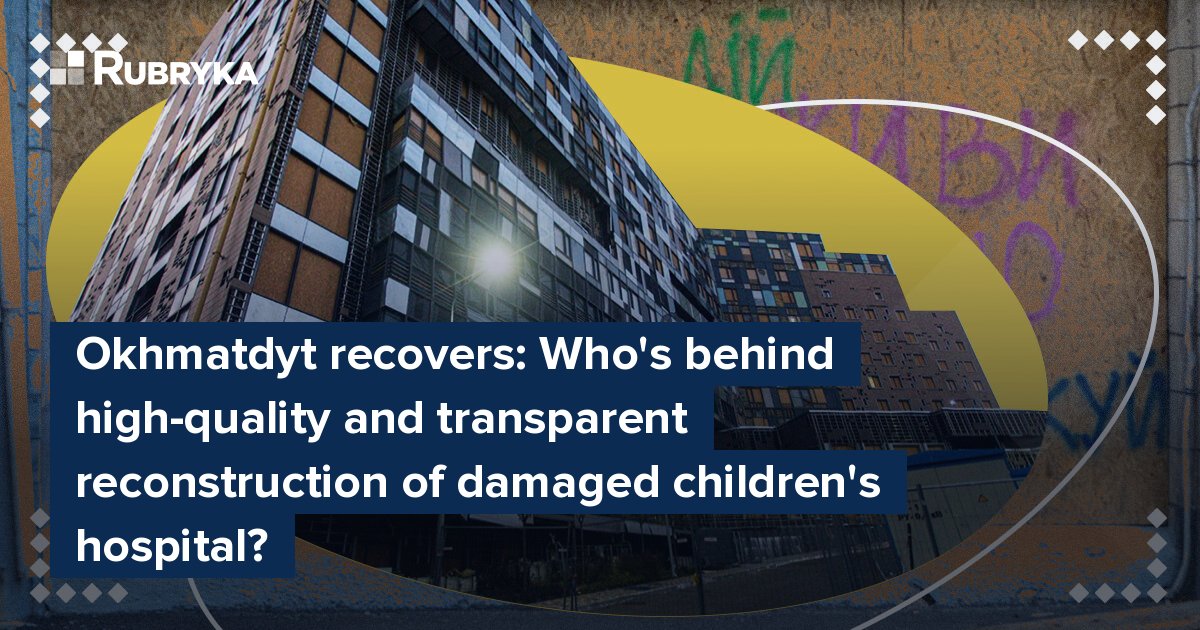
Okhmatdyt, Ukraine's largest children's hospital, accepts over 500 patients for medical care and conducts more than 40 surgeries on its patients daily. Since the Russian missile strike on July 8, the hospital has continued its work even as it undergoes repairs and reconstruction — nearly 5,000 children have been treated here since the attack.
In mid-November, the Okhmatdyt completed emergency anti-crisis repairs. This crucial first step created safe conditions for providing medical services, ensured the damaged building could be used during the heating season, and protected engineering systems from the elements.
These emergency measures prevented mold growth in parts of the building and stopped further damage due to bad weather. Skipping this step would have led to higher costs for future major repairs.

Okhmatdyt did priority emergency work on its damaged building from October to November. Photo: Mykola Tymchenko
Thanks to this phase of repairs, medical staff can continue treating children in appropriate conditions. After the attack, many departments relocated to the modern treatment and diagnostic complex.
What's next for Okhmatdyt? Major reconstruction lies ahead, but preparation is already in progress.

A window was sealed as part of emergency work in one of the wards of the Okhmatdyt cancer department. Photo: Mykola Tymchenko
Why didn't they start rebuilding right away?
To ensure transparency, the Ukrainian health ministry set up a Board to oversee the restoration of Okhmatdyt. This board, which started in August, consists of 15 members, including representatives from construction companies, energy experts, engineers, international organizations, NGOs, doctors, and patients — all bringing their expertise to the table. The board is led by Inna Ivanenko, Executive Director of the Patients of Ukraine Foundation.
After the first tender was canceled, there were two paths forward. The first was to start reconstruction immediately using a "design-and-build" approach — bypassing detailed planning and cost documentation. The second option was to break the work into several phases:
- Emergency repairs to maintain healthcare services and protect the building from further damage.
- Develop detailed design and cost documentation.
- Carry out major reconstruction.
The Ministry of Health and Okhmatdyt chose the second, more rational path. If they'd rushed into reconstruction, even under ideal circumstances, the design and major repair work wouldn't have started until December. However, with limited expertise in construction, strong public demand for transparency, time constraints before winter, and the potential risks of using subpar technical solutions, the first option was deemed too risky.
Quality and transparency are equally critical to Okhmatdyt's recovery.
Where do things stand now?
While emergency repairs were underway, the health ministry held productive negotiations with the World Bank to establish a contracting authority service for the hospital's reconstruction.
Background: The World Bank is one of the world's largest financial institutions that provides development aid. As of November, it has mobilized over $51 billion in financial support for Ukraine since February 2022. Ninety-five percent of this funding comes from development donors, with $41 billion already disbursed.
In partnership with the World Bank, the Ukrainian health ministry has contracted an international organization to oversee all reconstruction work at Okhmatdyt. After an evaluation, the World Bank selected the international company Eptisa Servicios de Ingeniería, S.L.
About Eptisa: Founded in 1956, Eptisa specializes in engineering, consulting, IT, and institutional development. The company operates in over 35 countries and has completed over 600 projects.
In Ukraine, Eptisa has provided engineering support and supervision for the construction of the Vinnytsia Regional Clinical Cardiology Center. It is also involved in the Health Enhancement And Lifesaving (HEAL) Ukraine project, offering engineering and consulting services for the construction, reconstruction, and capital repairs of healthcare facilities.

Screenshot from the official website of the engineering company Eptisa
Why do we need a contracting authority service?
Think of the contracting authority service as a team of experts who handle all the paperwork and planning needed to rebuild the hospital successfully. Without them, high-quality reconstruction simply wouldn't happen. Doctors aren't supposed to be construction engineers; they shouldn't have to be.
The World Bank funds the engineering company's work through grants, not loans. Eptisa's experts guarantee that their services will be delivered with top-notch quality and full accountability.
So, what does the contracting authority service actually do?
- Monitoring and control: keeping an eye on everything, making sure the work stays on track.
- Joining discussions about project designs and giving recommendations on what works best.
- Helping the hospital decide which technical documents to approve to move the project forward.
- Coordinating the construction process.
- Making sure everything is done by the book — legally and procedurally.
Right now, this team has already reviewed technical reports prepared by the State Research and Design Institute "NDIproektrekonstruktsiya" and looked over initial cost estimates to figure out how much the reconstruction might cost. They've also put together and approved a design plan based on inspection reports and current building standards.
With this step complete, the project was moving forward to the next important milestone: announcing a tender for creating detailed designs and cost documentation for major repairs. On December 10, the Ministry of Health announced a contract for engineering and consulting services at Okhmatdyt under the HEAL project. Eptisa will handle the job, and they'll be paid based on the hours they put in.
Ohmatdyt also announced tenders through the Prozorro system to develop design plans for restoring two facilities damaged by the Russian attack:
- Major repairs for the medical treatment and diagnostic complex.
- Major repairs for the transformer and diesel electric substations.
These projects will be funded by donations made to Okhmatdyt. Since the funds are held in a treasury account, they must follow strict government procedures for public money.

Graffiti on a closed window at one of the damaged Okhmatdyt buildings. Photo: Mykola Tymchenko
What's next after the first tender?
The company that wins the tender will create the design and cost documentation for repairing the damaged building. In Ukraine, this documentation has to include 17 sections. These cover everything from how the building will look and how sturdy it will be to meeting environmental and health standards. The original design of the building will also need to be factored in, along with material costs, which have to be reasonable and based on previous assessments.
Experts on the Okhmadyt reconstruction board say preparing this documentation will take at least four to five months, especially for a facility like this, which has complex systems and equipment.
Once the plans are ready, they'll go through a thorough review by certified experts. Eptisa will oversee this stage, too. The review will confirm whether the plans meet all the requirements for:
- Strength and durability;
- Safety and reliable utilities;
- Worker protection;
- Noise reduction;
- Public health and environmental standards;
- Fire and emergency safety;
- Energy efficiency and cost-effectiveness.
And this isn't the end. There are still more steps to go: supervision of the design, a tender for construction, permits, and more.
Right now, it's all about the paperwork, but don't underestimate its importance. At this stage, every decision about materials, designs, and costs is being made. The board is keeping a close watch to ensure everything goes as planned.
We created this article as part of the Recovery Window Network. For more information on the recovery of war-affected regions in Ukraine, visit recovery.win





